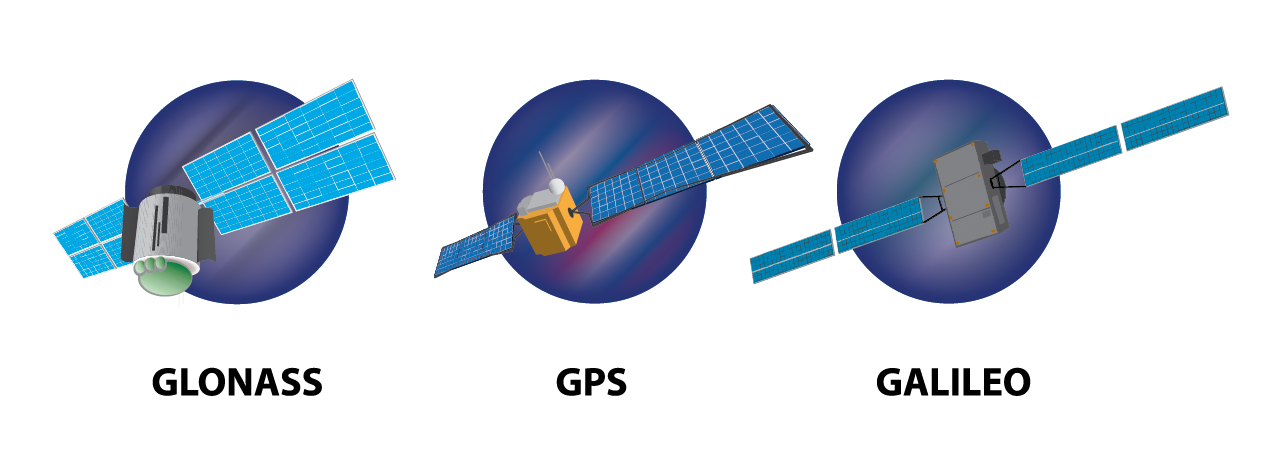Navigation: The process of determining the location and orientation of a device using GPS signals.
This process involves collecting data from multiple satellites in orbit around the Earth and triangulating the position of the device based on the time it takes for the GPS signals to reach it. The device also uses this data to determine its orientation or direction of travel. The navigation information is then used to update maps and provide directions to a desired location. Navigation technology has revolutionized the way people travel and navigate unfamiliar places, making it easier and more convenient to find your way.
Triangulation: The method of determining a position by measuring distances or angles from two or more reference points.
Triangulation is a common method used in surveying, mapping, navigation, and geolocation. It involves measuring distances or angles from two or more known reference points to a target point. The measurements are then used to calculate the position of the target point using trigonometry. Triangulation is useful because it provides more accuracy and precision than using a single reference point, as it helps to eliminate errors and inconsistencies in the measurement. In navigation, triangulation is used to determine the position of a vessel at sea, while in geolocation, triangulation is used to determine the position of a mobile device. Triangulation is also used in satellite mapping and aerial photography to create detailed maps of the Earth’s surface.
Satellites: Artificial objects that orbit the Earth and transmit signals that can be used to determine a device’s location.
They are used for a variety of purposes including communication, navigation, weather forecasting, and scientific research. Satellites are launched into space by government organizations, commercial companies, and other entities. They can be placed in either low Earth orbit (LEO) or geostationary orbit (GEO) depending on their intended use and desired coverage area. The use of satellites has revolutionized many aspects of our daily lives, from GPS navigation to television and internet access.
Ephemeris data: Information about the position and velocity of GPS satellites that is transmitted as part of the GPS signal.
Ephemeris data is critical for determining the location and velocity of GPS satellites in orbit. This data is used by GPS receivers to calculate their position on the Earth’s surface by measuring the time it takes for signals from multiple satellites to reach the receiver.
The ephemeris data contains information about the satellite’s position in orbit, its velocity, the exact time the data was transmitted, and the satellite’s clock offset. This information is transmitted as part of the GPS signal and is updated regularly to ensure accuracy.
The ephemeris data is used by the GPS receiver to perform the necessary calculations to determine its location. This includes determining the distance between the receiver and the satellite, the exact time of the signal transmission, and the satellite’s clock offset. The receiver then uses this information to determine its position on the Earth’s surface with high accuracy.
In summary, ephemeris data is an essential component of the GPS system and is critical for determining the location and velocity of GPS satellites in orbit, enabling GPS receivers to calculate their position on the Earth’s surface.
Almanac: A database of information about the positions of all GPS satellites that is transmitted as part of the GPS signal
. The almanac provides information such as the precise location of each satellite in orbit, the health status of each satellite, the time at which each satellite last transmitted data, and other information that is necessary for the GPS receiver to calculate its location. The almanac is transmitted continuously as part of the GPS signal, allowing GPS receivers to quickly determine their position by identifying the satellites in view and using the information in the almanac to calculate the distances to those satellites. The almanac data is updated regularly to ensure that GPS receivers have the most accurate and up-to-date information about the positions of GPS satellites.
Receiver: A device that receives GPS signals and uses them to determine the location of the device.
A GPS receiver, also known as a GPS module or GPS antenna, is an electronic device that receives signals from GPS satellites orbiting the earth. These signals contain information about the location, speed, and direction of the receiver, which the device uses to calculate its own position. The receiver then displays the location information on a map or in numerical form, making it a valuable tool for navigation, location tracking, and mapping. GPS receivers can be found in a variety of devices, including smartphones, navigation systems, and wearable devices.
GPS chip: A specialized microchip that is designed to receive and process GPS signals.
It is responsible for determining the location, speed, and direction of a device equipped with the chip. The GPS chip works by receiving signals from satellites orbiting the Earth, triangulating the position of the device, and then using this information to calculate its location. This technology is widely used in GPS navigation systems, smartphones, and other location-based devices. The accuracy of the GPS chip depends on several factors, such as the number of satellites available for signal reception, the strength of the signals, and the presence of any obstructions or interference.
GPS antenna: A device that receives GPS signals from satellites and sends them to a GPS receiver for processing.
The GPS antenna is an essential component of a GPS system. It works by capturing the signals emitted by GPS satellites and transmitting them to the GPS receiver. The GPS receiver then uses this information to determine the user’s location, speed, and other relevant data. The antenna is typically located on the top or side of a GPS device and is designed to be small and lightweight to allow for portability. It is also engineered to be highly sensitive and able to pick up GPS signals even in challenging environments, such as under heavy tree cover or in built-up areas.
Differential GPS (DGPS): A system that uses additional reference stations to improve the accuracy of GPS position data.
DGPS works by receiving signals from the GPS satellites and comparing them with signals from the reference stations, which are placed on known locations. The reference stations have accurate positions and they can calculate the errors in the GPS signals, which are then transmitted to the DGPS receiver. The receiver can then use this correction information to improve the accuracy of its GPS position. DGPS can provide a positional accuracy of up to 10 meters, compared to the typical accuracy of 20-30 meters with normal GPS. This technology is commonly used in surveying, construction, and navigation applications.
Real-time Kinematic (RTK): A high-precision GPS system that uses real-time measurements to improve the accuracy of position data.
RTK uses a combination of GPS and GLONASS satellites to calculate a user’s location with sub-decimeter accuracy. The system works by having a base station at a known location that sends correction signals to a roving receiver, which in turn provides real-time updates to the position data. This eliminates the need for post-processing and provides near real-time position information. RTK is commonly used in applications such as surveying, agriculture, mapping, and autonomous vehicles.

